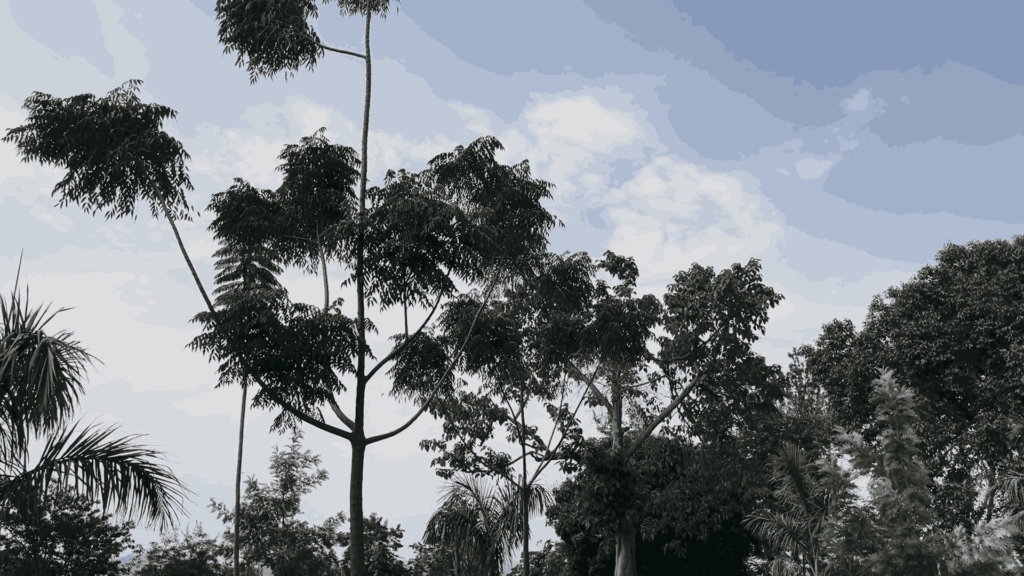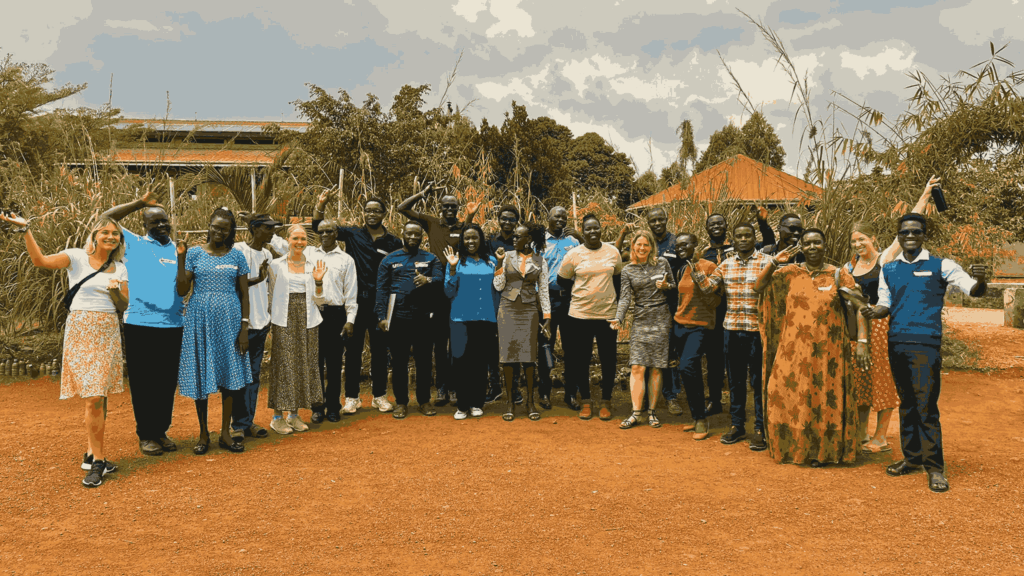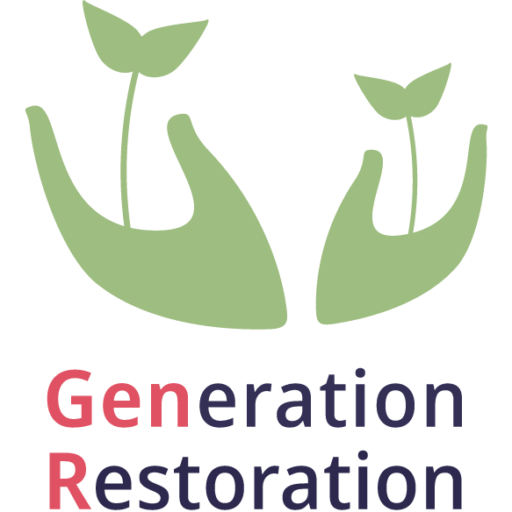
Seeds of Tomorrow:
The Untapped Power of Foresight in Refugee Camps and Regenerative Farming
Have you ever wondered where to stay if your home country becomes ground for conflict? Finding refuge has unsettling connotations of uneasiness, survival, and repression of one’s livelihood. Suddenly, we have realized, that conflict might not only happen on the African continent. They can happen anywhere. Hence, we all might turn refugees. Restoring dignity for those already living in settlements and starting to foresee new concepts to prevent these connotations from irreversible materialization needs exploration now. What if we transform refugee camps into places of hope?
No Rest but F(l)ight
Beyond survival, there is often no time and space to think about a perspective for the future. Conflicts that propel migration and displacement shift the narrative from living to surviving, and from vision to day-by-day living. In Africa, interstate conflicts have doubled in the last ten years. In addition to the 59 current conflicts involving states, there are 42 non-state conflicts. These conflicts have resulted in 35 million Internally Displaced Persons (IDPs) in Africa and 2,8 million African refugees in foreign countries. The root causes range from ethnic tensions and resource competition to the fragmentation of (political) groups, and the internationalization of involvement. However, the underlying drivers span the full spectrum, from colonial legacy and climate change to weak institutions and international power portrayal. People will leave and stay as a profound security architecture overarching all countries is not a given but rather an institutional problem induced by missing (individual-)responsibility. The concept of subsidiarity gives the member states of the African Union (AU) a chance to establish their position before a common decision is made at AU level. Missed opportunities, such as the Silencing the Guns (STG) initiative – which recognized the need to achieve security before development could prosper – have been extended to 2030, as the current situation is no indication that the guns are being contained rather than released. Yet, this article shall focus on IDPs and refugees affected by these root causes and meta-level drivers, finding the time and space to look beyond survival. A passive approach to the current establishment of refugee settlements can lead to new security concerns, as upheaval, environmental conditions and human rights issues become more likely. It is about planning the unplanned, sharing the capacity to wander around and get back from day-to-day living to vision creation.
No Touch-and-Go - IDPs
No one has really planned for a scenario of protracted displacement although protracted violence is a reality on the African continent. Displacement is not only made more likely by the time spent in conflicts, but also by recurring patterns of movements. Internal displacements are common before crossing a border and becoming a refugee. A recently published article by the Internal Displacement Monitoring Centre reveals that flood patterns and the subsequent displacement patterns are predictable consequences of the Gu and Deyr seasons in East Africa. However, climate change impacts those patterns in the long-term and, in the short-term, marginalized groups are dependent upon the access to water and stay in areas that are often not prepared for flooding. Although drought displacement data is not widely available, it is assumed to have accounted for 11 percent of causes of disaster displacement over the past 15 years. At the AU level, countries have acted in the form of the world’s first ever legally binding regional convention that specifically addresses the issue of internally displaced persons (IDPs). However, there is no reporting mechanism induced and many states have neither signed nor ratified the convention.
Uganda has been one of the key contributors to the Convention and already had a national framework in place since 2004. Given that Eastern Africa accounts for 46 per cent of the continent’s IDPs in Africa, engagement is paramount. However, given that neighboring states have not signed or ratified the treaty, a holistic approach from flight to staying in the country or continuing the journey across borders is not achievable.
No Leave but Stay - Refugees
Now, the focus is on a status quo that is more or less deliberately unplanned. IDPs can become refugees or movements can be cross-border from the outset. Between 1997 to 2020, 1,543 refugee settlements were established on the African continent. 20-30 of these were located in East Africa, including 13 in Uganda. The largest refugee camp in Africa and the once largest refugee camp in the world, the Bidi Bidi refugee camp, hosts between 250,000 and 285,000 refugees. The NGO Generation Restoration works closely with refugees in the camps to develop holistic, long-term, and sustainable solutions to this protracted displacement. Many refugees, particularly in Uganda, recognize that their reliance on food aid leaves them vulnerable, especially in a volatile geopolitical context. At the same time, more than 75% of the Earth’s land has been substantially degraded. This significantly impacts the well-being of nearly half of the world’s population, particularly those who depend on fertile soil, such as refugee farmers in Uganda who are already striving for independence from food aid. So, I am asking myself the following question: What if we transformed refugee settlements in places of regeneration? What if we transition from a vicious cycle induced by upheaval, environmental conditions, and human rights issues at the sites to a virtuous cycle? This would involve restoring the land, creating durable living conditions, and restoring dignity.

Why Regeneration?
The annual cost of land degradation exceeds US$ 231 billion. Therefore, regeneration is an interconnected global issue that requires large-scale, standardized, and economical solutions.
Large-scale
There are plenty of examples that demonstrate how we can turn global issues into local solutions. Many regenerative projects around the world focus on regenerating land in order to ultimately support the people who need it most. Ecosystem restoration on land improves soil fertility, the water cycle and the local climate through regenerative practices such as permaculture, agroecology, agroforestry, holistic management, organic farming and other techniques. Strengthening ecosystem services such as food production, clean water and air, cooling and shade, natural building materials, climate protection and biodiversity literally plants the seeds for a healthy future for people and the planet.
Standardized
We are now in the UN Decade on Ecosystem Restoration (2021-2030). We can use this momentum to shine the spotlight on nature-based and people-centered solutions and encourage them to multiply, pollinate others and scale their positive impact. Around 2 billion hectares of degraded land worldwide have the potential to be restored. Much of this work could take the form of “mosaic restoration”, combining forests with protected areas, agriculture, water bodies, and human settlements across entire landscapes. Restoration can help us to prevent and tackle major crises such as biodiversity loss and climate change effectively.
Economical
The restoration of degraded ecosystems by 2030 can generate 9 trillion US-Dollars’ worth of ecosystem services and remove 13 to 26 gigatons of CO2e from the atmosphere. The benefits are ten times the initial investment costs.
Why Strategic Foresight?
And yet another tool has entered the chat. I am not a fan of putting a method in front of any practical idea. However, sometimes, a method can offer much more than you realize. This method provides simple and solid awareness creation with a profound strategy behind it. As so often happens, people can advocate for ideas but let them go unheard. Foresight is a modern, popular tool with a wide reach. Rather than theorizing about one future, it considers many possible futures to identify factors relevant to today’s decision-making. Out of foresight, funding mechanisms can be advocated for before disaster occurs, and contingency planning is enabled. Many organizations have been using strategic foresight already, but did not label it as such:
Timeline of Strategic Foresight in Humanitarian Contexts

Excerpt to showcase strategic foresight usage in adjacent fields of Generation Restoration
In a highly uncertain environment such as refugee settlements, strategic foresight can help to identify conflict and resource dynamics, offering significant advantages in relation to all 17 SDGs. Specifically, in the context of regenerative agriculture in refugee settlements, where long-term success is crucial and there are many stakeholders involved – including refugees, host communities, GROs, NGOs, IOs and governments – strategic foresight can help inform today’s decision-making process. As mentioned, it is a tool, not only for strategizing, but also for raising awareness.
Horizon Scanning for Implementation
Further advancements towards the implementation of regenerative agriculture cannot be made until the current situation has been assessed. Only then can the horizon be scanned to identify what has been overlooked in the current state, to support community-driven advancement of regenerative agriculture. This context-making can be achieved by analyzing the local ecological and legal circumstances surrounding land and water resources. Furthermore, it is necessary to consider how many GROs, UN agencies, agencies, OPM offices and host communities are involved. Additionally, the cultural context of regenerative agriculture needs to be considered. Questions such as „What does regenerative agriculture mean to you?“ could help to resolve potential collaboration issues.
Secondly, relevant data must be collected from GROs and their pilot projects, or through best practices gathered in formats such as the FERM registry or the UN Decade on Ecosystem Restoration. Innovation and trends can then be identified.
The essence of horizon scanning is identifying signals, trends, and Wild Cards. Their significance for the camps can open up the horizon and transform insular thinking into integrated thinking. To me, this represents the start of policy-making from within rather than from outside.
Inclusive Imageries for Holism

Generation Restoration Roundtable in Uganda: Inclusivity is Key for Strategic Foresight
Delving into practice, Inclusive Imageries in Strategic Foresight are bound to building participatory and co-designed scenarios about the future of regenerative agriculture in refugee camps, with the aim of raising awareness of the differences. Presenting results in the form of storytelling or art can encourage people with different educational backgrounds to participate. Moreover, terms used by the people affected and practicing regenerative agriculture might be linked to cultural backgrounds that can generate new narratives about the meaning of regenerative agriculture for these stakeholders, with the potential to shape their understanding of the concept and its application.
Backcasting for Engagement
Looking into the future from where we are today might be easy, but Strategic Foresight encourages us not only to look forward. It also encourages us to envision it in a strategic way. This allows us to also look into the future from a desired future. This is called “backcasting”.
As the method looks about 20 years ahead, it essentially provides the basis for the argument that dependency on food aid and other dependencies in a refugee settlement might not be based on long-term thinking. This backcasting approach is complex as it has various environmental and humanitarian goals attached to it. However, it encourages all aspects to align. Also, when considering the environment, specifically restoration, the question of what is needed to restore land can be answered by looking at what the soil should actually be able to store and provide in ecosystem services.
To do, to care
Seeds will not grow unless they are watered. Following the path of foresight on the topic of regenerative agriculture in refugee camps is a method to create awareness. It is an untapped field within the topic, but it is hugely relevant to raise awareness and encourage people to care about the seeds on the ground. As Generation Restoration, we are already partnering with GROs in Uganda. Let’s start caring by doing because action speaks louder than words.
– By Celia Schiller, Co-Founder & Co-CEO Generation Restoration e.V.
Sources for Figure 1:
- UNHCR Emergency Handbook: Food Security → https://emergency.unhcr.org/entry/51763/food-security
- UN News (2021): Climate change & refugees → https://news.un.org/en/story/2021/04/1090432
- UNHCR Global Trends 2021 Report → https://www.unhcr.org/wp-content/uploads/sites/27/2022/06/UNHCR-global-trends-report_2021.pdf
- FAO Case Studies on Agriculture in Refugee Settings → https://www.fao.org/resilience/resources/resources-detail/en/c/1187315/
- UNHCR Livelihoods & Economic Inclusion → https://www.unhcr.org/livelihoods
